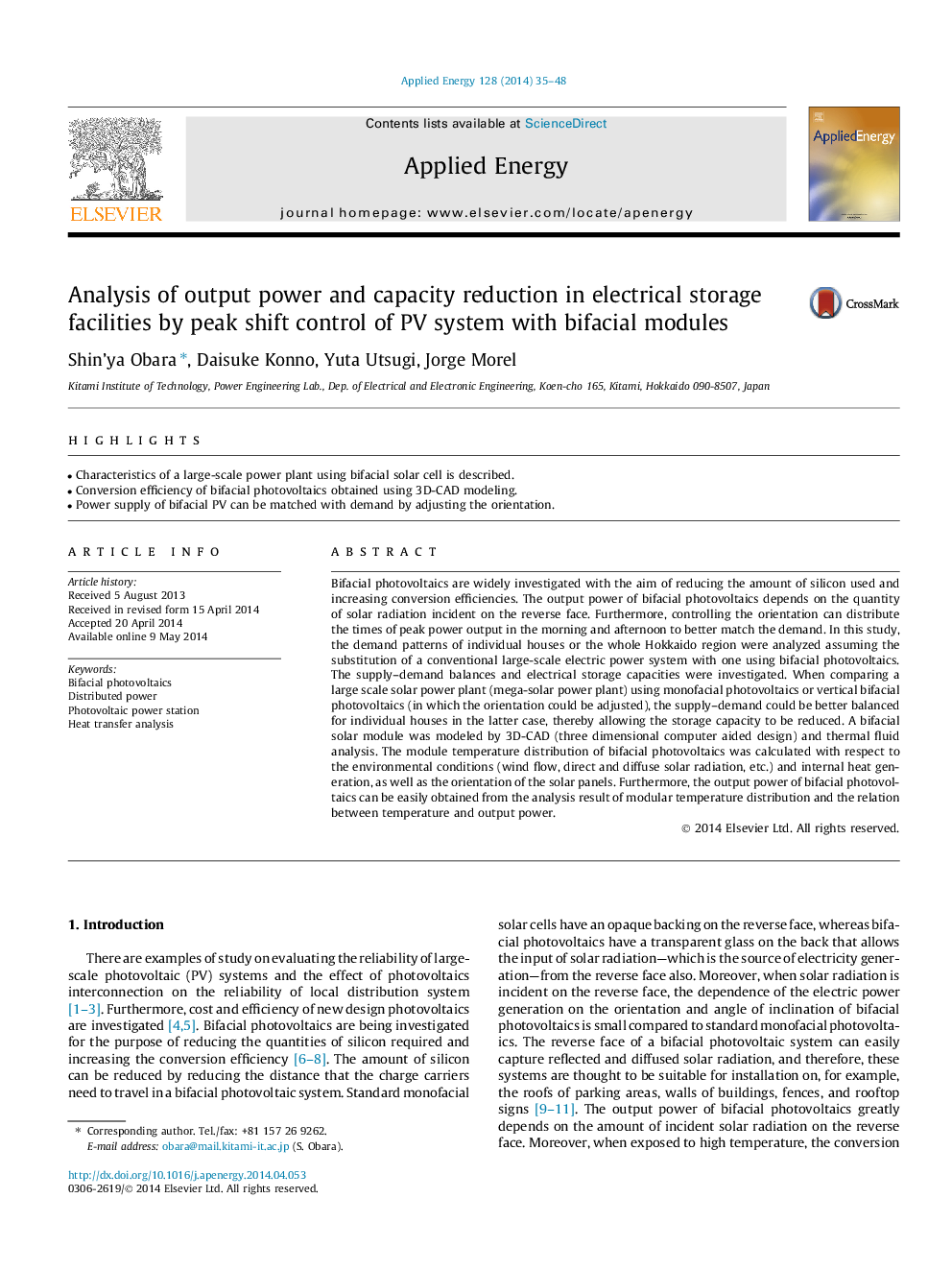| کد مقاله | کد نشریه | سال انتشار | مقاله انگلیسی | نسخه تمام متن |
|---|---|---|---|---|
| 242662 | 501896 | 2014 | 14 صفحه PDF | دانلود رایگان |

• Characteristics of a large-scale power plant using bifacial solar cell is described.
• Conversion efficiency of bifacial photovoltaics obtained using 3D-CAD modeling.
• Power supply of bifacial PV can be matched with demand by adjusting the orientation.
Bifacial photovoltaics are widely investigated with the aim of reducing the amount of silicon used and increasing conversion efficiencies. The output power of bifacial photovoltaics depends on the quantity of solar radiation incident on the reverse face. Furthermore, controlling the orientation can distribute the times of peak power output in the morning and afternoon to better match the demand. In this study, the demand patterns of individual houses or the whole Hokkaido region were analyzed assuming the substitution of a conventional large-scale electric power system with one using bifacial photovoltaics. The supply–demand balances and electrical storage capacities were investigated. When comparing a large scale solar power plant (mega-solar power plant) using monofacial photovoltaics or vertical bifacial photovoltaics (in which the orientation could be adjusted), the supply–demand could be better balanced for individual houses in the latter case, thereby allowing the storage capacity to be reduced. A bifacial solar module was modeled by 3D-CAD (three dimensional computer aided design) and thermal fluid analysis. The module temperature distribution of bifacial photovoltaics was calculated with respect to the environmental conditions (wind flow, direct and diffuse solar radiation, etc.) and internal heat generation, as well as the orientation of the solar panels. Furthermore, the output power of bifacial photovoltaics can be easily obtained from the analysis result of modular temperature distribution and the relation between temperature and output power.
Journal: Applied Energy - Volume 128, 1 September 2014, Pages 35–48